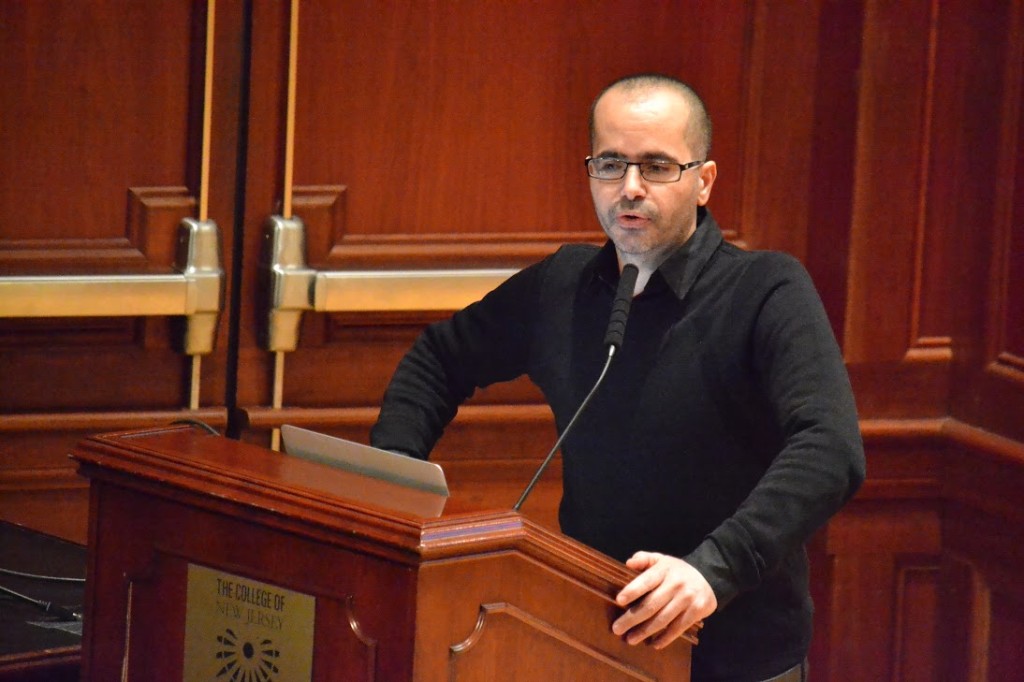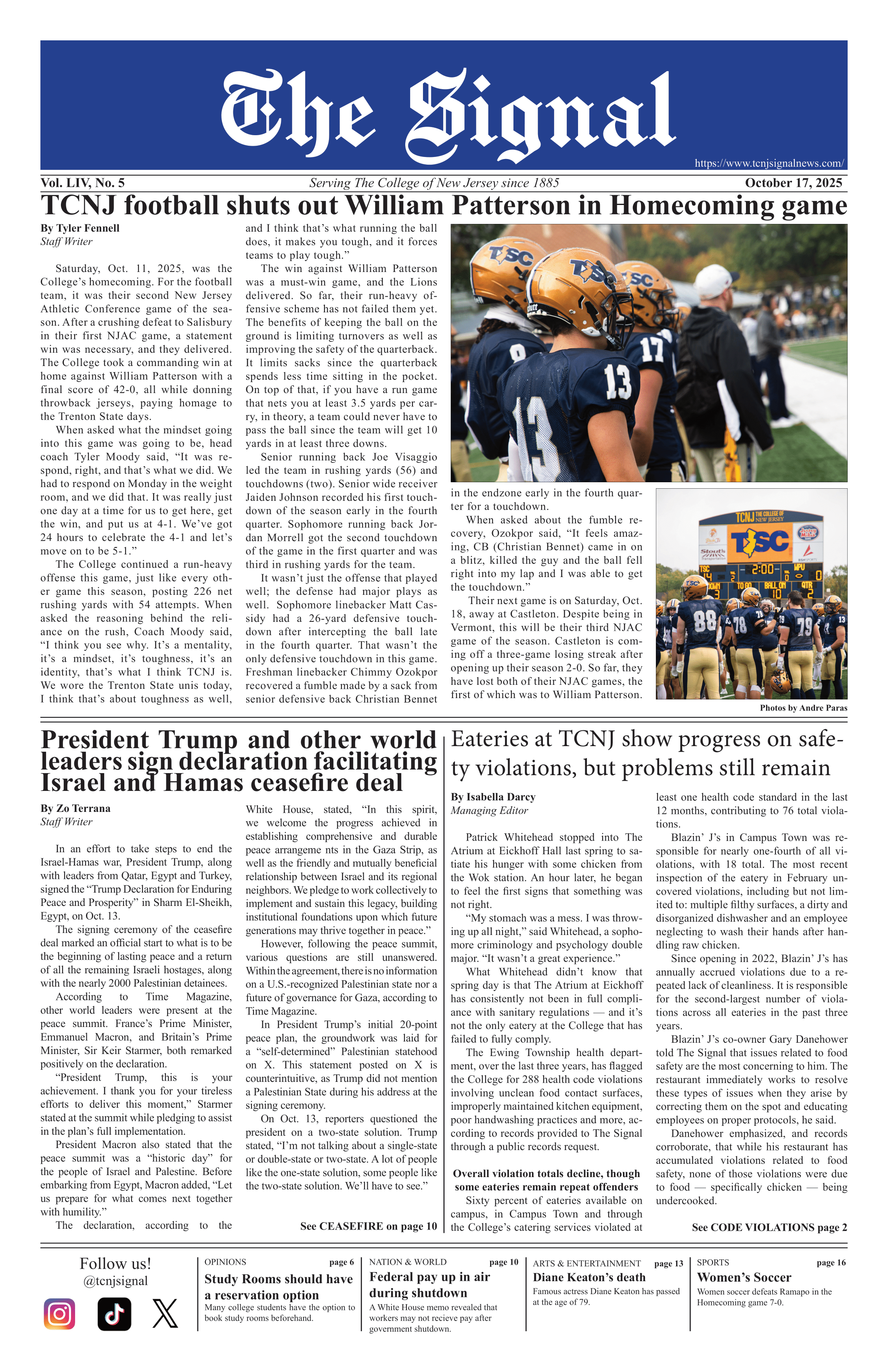By Kristen Solis
Correspondent
Performance artist Wafaa Bilal spoke to students about his politically-driven art that is both physically and emotionally intense on Friday, Feb. 26, in Mayo Concert Hall as part of the College’s Brown Bag series. All of Bilal’s work is inspired by his personal experiences and blurs the lines between comfort zones and conflict zones.
In 1990, Bilal, who was born in Iraq, refused to participate in Iraq’s invasion of Kuwait and was subsequently forced to flee the country. From there, he lived in a refugee camp for two years while teaching children art before arriving to the United States so he could continue his work as an artist.

Bilal always tries to use his art to reach people who do not normally attend galleries or museums and to engage them in a dialogue that brings them discomfort. Bilal said he often does this by using the Internet so that people can get involved directly.
In 2008, Bilal did exactly this with his piece “Domestic Tension” in Chicago, where he lived in a gallery for a month. At any given moment, someone from the Internet who was watching remotely through a live video feed could shoot Bilal with a paintball gun less than 20 feet away. There was never a true moment of peace, as he was harassed by incessant fire.
Not only were people able to control the gun through the Internet, but Bilal also included a chatroom to talk to people about why they were shooting him. In one small room, he created what he called “a miniature conflict zone” inside a comfort zone.
“Domestic Tension” was created as a response to the invasion of Iraq and to the loss of his brother from an air launch missile in his hometown in 2004.
“I was never able to admit my loss,” Bilal said.
Later in 2008, he started another controversial interactive piece called “Dog or Iraqi?” in which people online could vote between Bilal or a dog named Buddy to be waterboarded. Though PETA expressed unhappiness with the piece, Buddy had nothing to fear because Bilal was overwhelmingly picked to be waterboarded.
When he showed the video of himself getting waterboarded, there was complete and utter silence from the audience. The tension was palpable in the hall as students watched as his body twitched.
After a moment, Bilal said, “I can say waterboarding is not simulated drowning — it is drowning.”
In 2010, in response to the untold stories of thousands of dead Iraqis, he created another intimate piece, “...And Counting,” using his body as a canvas. Bilal got a tattoo of a borderless Iraq on his back, featuring the casualties of both Americans and Iraqis in the war. The Americans are represented by permanent, red ink, while invisible, white ink that can only be seen under black light was used for each dot representing a fallen Iraqi. As he was tattooed, he had people recite the names of those who died. This performance piece highlighted the double standard of war and how innocent Iraqi deaths often go unheard of in American media.
From 2010 to 2011, Bilal implanted a camera into the back of his head, a piece he called “3rd I.” It was a reaction to the constant surveillance of the Middle East.
“I think it’s about the privilege we have,” Bilal said in response to the demanding nature of his art. “ It’s a loyal obligation to continue the work as long as there is conflict.”
Bilal’s extreme performance art is meant to bring to light the subjects that citizens tend to ignore due to the discomfort it brings.
“Art is supposed to inform, to agitate,” Bilal said.






